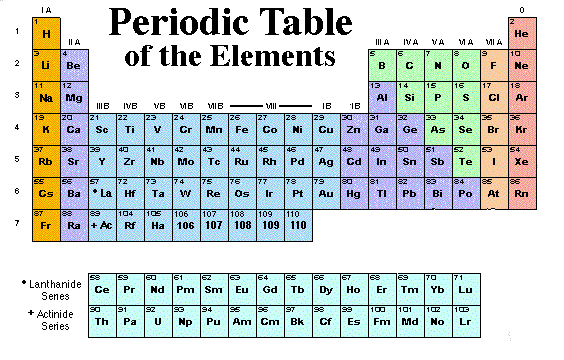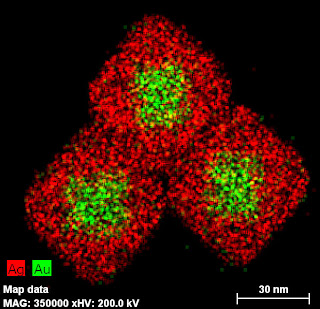Search This Blog
Friday 12 July 2013
Thursday 11 July 2013
Supercooled Water Transforms Into New Form of Liquid
Researchers at the University of Arkansas have identified
that water, when chilled to a very low temperature, transforms into a new form
of liquid.
Through a simulation performed in “supercooled” water, a
research team led by chemist Feng “Seymour” Wang, confirmed a “liquid-liquid”
phase transition at 207 Kelvins, or 87 degrees below zero on the Fahrenheit
scale.
 |
| Water and ice (stock image). Researchers have identified that water, when chilled to a very low temperature, transforms into a new form of liquid. (Credit: © Oscar Espinosa / Fotolia) |
Credit: University of Arkansas
Wednesday 10 July 2013
3-D Structures Built out of Liquid Metal
Researchers from North Carolina State University have developed
three-dimensional (3-D) printing technology and techniques to create
free-standing structures made of liquid metal at room temperature.
 |
| Researchers have developed three-dimensional structures out of liquid metal. Image: Michael Dickey. |
“It’s difficult to create structures out of liquids, because liquids
want to bead up. But we’ve found that a liquid metal alloy of gallium
and indium reacts to the oxygen in the air at room temperature to form a
‘skin’ that allows the liquid metal structures to retain their shapes,”
says Dr. Michael Dickey, an assistant professor of chemical and
biomolecular engineering at NC State and co-author of a paper describing
the work.
Credit: NC state University
Wednesday 3 July 2013
Fluorescent Fingerprint Tag Aims to Increase IDs from 'Hidden' Prints On Bullets and Knives
A new way of detecting and visualizing fingerprints from crime scenes
using colour-changing fluorescent films could lead to higher confidence
identifications from latent (hidden) fingerprints on knives, guns,
bullet casings and other metal surfaces. The technique is the result of a
collaboration between the University of Leicester, the Institut
Laue-Langevin and the STFC's ISIS pulsed neutron and muon source, and
will be presented today at the Royal Society of Chemistry's Faraday
Discussion in Durham.
http://www.eurekalert.orgTuesday 2 July 2013
Better Antibiotics: Atomic-Scale Structure of Ribosome With Molecule That Controls Its Motion
This may look like a tangle of squiggly lines, but you’re actually
looking at a molecular machine called a ribosome. Its job is to
translate DNA sequences into proteins, the workhorse compounds that
sustain you and all living things.
The image is also a milestone. It’s the first
time the atom-by-atom structure of the ribosome has been seen as it’s
attached to a molecule that controls its motion. That’s big news if
you’re a structural biologist.
Credit: http://newscenter.lbl.gov
Monday 1 July 2013
Tiny Nanocubes Help Scientists Tell Left from Right
In chemical reactions, left and right can make a big difference. A
"left-handed" molecule of a particular chemical composition could be an
effective drug, while its mirror-image "right-handed" counterpart could
be completely inactive.
That's because, in biology, "left" and "right"
molecular designs are crucial: Living organisms are made only from
left-handed amino acids. So telling the two apart is important—but
difficult.
Credit: http://www.bnl.gov
Subscribe to:
Posts (Atom)
- Do not get over excited over happiness and do not get over depressed over sorrow.
- Do not get over bonded with anyone and anybody because it can lead to problems and sorrow.
- Never think that my duty is the topmost or lowermost. Every duty is respectful. The responsibility undertaken or given as per the position is the noblest duty.
- Elevate yourselves, family, society and nation and never denigrate yourselves, family, society and nation.
- We are our own closest relatives and if not properly utilised we will become our closest enemies.
- There are possibilities of success and failure in any endeavour. One cannot assure success always.
- Death is inevitable for everyone in this world. In any endeavour at the maximum an individual may die.
- People may say good and also they may say bad. Approach them with stabilised mind.
- Take anything after scientifically, logically and rationally analysing them.
- Perform your duty, responsibility and accept the privileges eligible for you.
- First change ourselves and then try to change others.
- We are all instruments /tools in the hands of the nature for performing the duty. So do not think that I am doing the duty. Think that I am an instrument to do the duty.
- Results of action may not be sweet always. Accept what ever may be the result.
- Follow the path of great scholars who guided the world. Listen their messages.
- Results and rewards will come and go but stick to your duty with devotion, dedication and sincerity.




